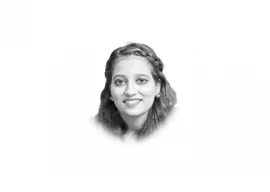
As many as 58.7 million people in Pakistan are living in multidimensional poverty with 46 per cent of rural population and 18 per cent of urban households falling below the poverty line, says a survey report.
The report titled ‘Clustered Deprivation’ is prepared by the Sustainable Development Policy Institute (SDPI) with the financial and technical assistance of United Nation Development Program (UNDP).
The SDPI measures poverty on the basis of five dimensions – education, health, water supply and sanitation, household assets/amenities and satisfaction to service delivery. Further, a person taking less than 2,350 calories per day and earning less than $1.25 per day according to the United Nations standard has also been regarded as living below the poverty threshold.
The highest incidence of poverty prevails in Balochistan with 52 per cent of the households living under the poverty line, followed by 32 per cent, 33 per cent and 19 per cent respectively in Khyber Pakhtunkhwa (K-P), Sindh and Punjab, said the report presented to all provincial governments during the last month of 2013
In Punjab, higher incidence of poverty was observed in southern districts. Rajanpur is on top of the list with 44 per cent households falling below the poverty line.
The people living below the line in other southern districts respectively comprise 40 per cent households in Muzaffargarh, 36 per cent in DG Khan, 33 per cent in Bahawalpur, 31 per cent in Layyah and Lodhran, 31 per cent in Pakpattan, and 28 per cent in Multan, Khanewal and Bhakkar districts.
The SDPI report on Balochistan says the restive province faces the highest incidence of poverty as compared to others. However, except for Muskhel, the majority of the districts in the north have relatively low incidence of poverty. It is high in the central and southwest part of the province with the exception of Panjgur and Gawadar districts.
In K-P, the incidence of poverty is extremely high in the northern mountainous regions, very high in the southern regions, average in the central parts while the districts adjacent to Islamabad show low levels of poverty.
According to the document, the southeast part of Sindh is the poorest region, while central Sindh is relatively less poor and southwest Sindh the least poor region of the province. Out of 27 districts, the inhabitants of 18 districts are facing severe poverty conditions.
Tharparkar has the highest incidence of poverty in Sindh with 47 per cent households living below the poverty line. The report says 42 per cent households in Badin, 41 per cent in Tando Muhammad Khan, 40 in Thatta, 39 per cent in Nawabshah and Jamshoro, 38 per cent in Larkana and Shahdadkot, 36 per cent in Jacobabad, 32 per cent in Tando Allah Yar, 29 per cent in Matiari and Dadu, 28 per cent in Shikarpur and Sanghar, 27 per cent in Khairpur, and 25 in Hyderabad and Sukkar districts live below the poverty threshold.
The report reveals that one-third of Pakistani households are facing poverty, with uneven distribution mong provinces and rural and urban populations. With more than half of the population below the poverty line, Balochistan is the poorest province.
Acknowledging the SDPI report, Punjab Planning and Development Board chief Khalid Sultan said it had used the report had used data from Pakistan Social and Living Standards Measurement Survey (PSLM) that is specifically designed for the analysis of poverty.
Published in The Express Tribune, February 25th, 2014.























COMMENTS
Comments are moderated and generally will be posted if they are on-topic and not abusive.
For more information, please see our Comments FAQ